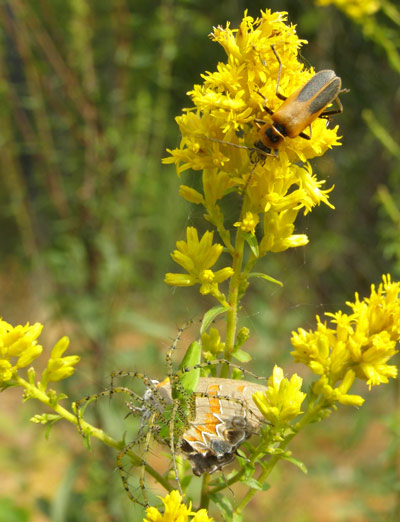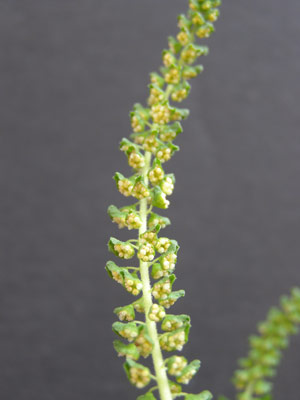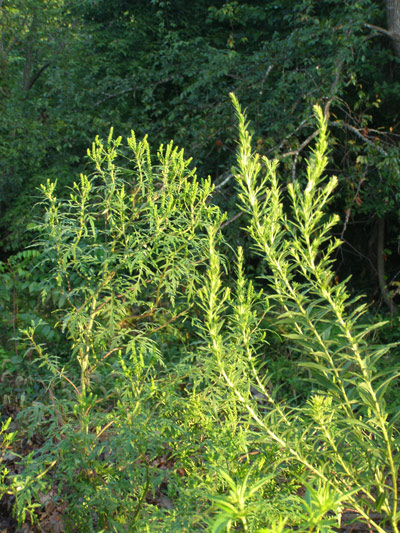Don’t blame goldenrod for hay-fever season
By Ken Moore
Flora Columnist

Beautiful goldenrods, which don’t cause hay fever, will brighten our roadsides through the fall. Photo by Ken Moore
Please don’t blame hay-fever sneezes and stuffy noses on beautiful goldenrod.
But before I go into that, there’s more about Chapel Hill’s mystery tree.
Last week, space did not allow for me to tell how John Eliadis’ dad also remembered there was a covenant issued that Chapel Hill’s coastal redwood could never be cut. Obviously Duke Energy’s utility pruning crew didn’t know about that covenant when they performed their recent drastic pruning job on that tree.
But Chapel Hill town forester Curtis Brooks, once a Coker Arboretum curator who credits W.C. Coker with planting that tree, is not familiar with such a town covenant.
So emerges another mystery: What is, or was, that “no tree-cutting covenant?†Hopefully someone in Chapel Hill government or a town historian will uncover the answer.
Now back to hay-fever season. In spite of garden columns and articles in horticulture magazines during past decades, many of us still blame the fall season’s miseries on strikingly visible goldenrods.

A closer look reveals a soldier beetle at top, unaware of the drama below, where a lynx spider has captured a hairstreak butterfly. Photo by Ken Moore
For goldenrod pollen to get up your nose, a bee or butterfly or other pollinating insect will have to carry it there, so you may relax when you see or walk by goldenrods. Goldenrods were one of the first American plants carried back in the mid-1600s to English gardens, where they are still a perennial favorite in flower borders.
Here we enjoy a long flowering season from more than 50 species of Solidago. Herbal fragrant goldenrod, Solidago odora, came into flower on Occoneechee Mountain in early July, and several other goldenrods have colored the roadsides since. Now the early tall goldenrod, Solidago gigantea, is beginning to bloom out at Mason Farm and along sunny roadsides. Late tall goldenrod, Solidago altissima, will continue the season into November.
Ragweed, as the photo shows, often grows right next to goldenrod. Ragweed leaf margins are distinctly deeply lobed like marigold leaves and in contrast, goldenrod leaves have smooth (entire) or finely toothed margins.
Ragweed flowers, without showy petals, are difficult to discern. They appear as a little candelabra of erect stems of countless pollen-bearing anther sacs held high above non-petaled female flowers in leaf axils on stems below. When fully mature the erect male candelabras are yellow with exposed pollen, waiting for the slightest breeze. These flowers are virtually unseen next to showy golden-yellow flower heads of goldenrods.

Hidden beneath green bracts, ragweed male flower pollen sacs here are about to explode, releasing clouds of pollen into the air. Photo by Ken Moore
When we sneeze and see goldenrods in flower, it’s easy to cast blame on the innocent, but that’s circumstantial evidence at best.
Learn the difference, avoid the ragweeds and take a closer look at the goldenrods, where you’re likely to find interesting pollinators and tiny spiders hidden amongst the flowers awaiting their unsuspecting dinner visitors.
Email Ken Moore at flora@carrborocitizen.com. Find previous Ken Moore Citizen columns at The Annotated Flora.
Comments are closed.



Thank you so very much. I end up explaining this every year, every single year.